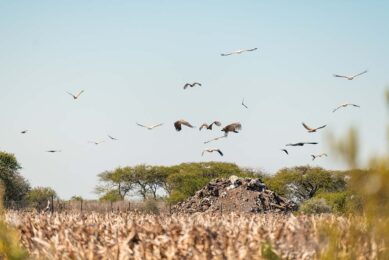Farm visit: Valuable ibérico hams, from birth to market
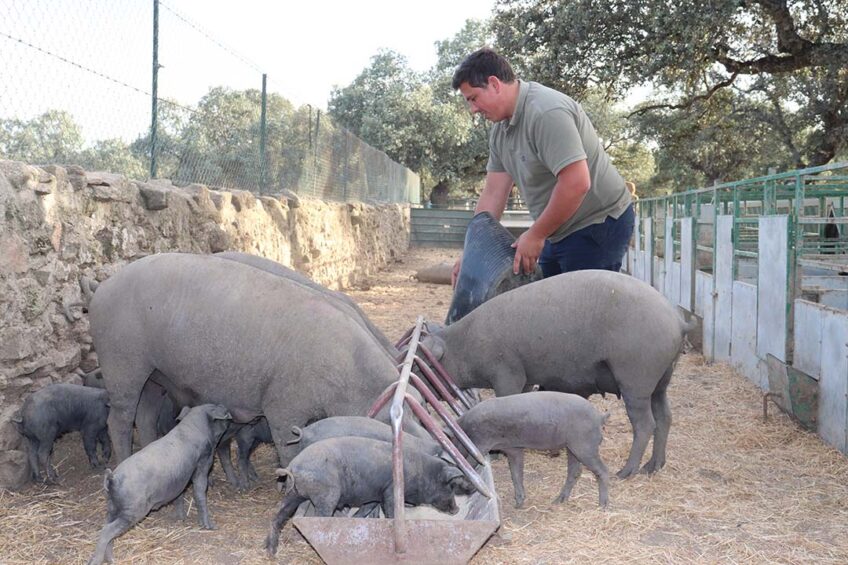
Making the world-famous, high-quality Spanish pata negra hams is a true art. Antonio José Cano Cabrera, located in the south of Spain, owns 70 sows, which allows him to control the entire chain, from the birth of the black piglets to processing and sale of the hams a few years later. He wants to grow further, but profitability remains a concern.
While driving to Antonio Cano’s pig farm, it quickly becomes clear how extremely dry it can be in southern Spain at certain moments of the year. The vast forested areas with pastures (dehesas) of holm oaks and cork oaks are completely yellowed. There is hardly any sign of animals. This region is known for the rearing of Iberian pigs, black pigs that roam the forests.
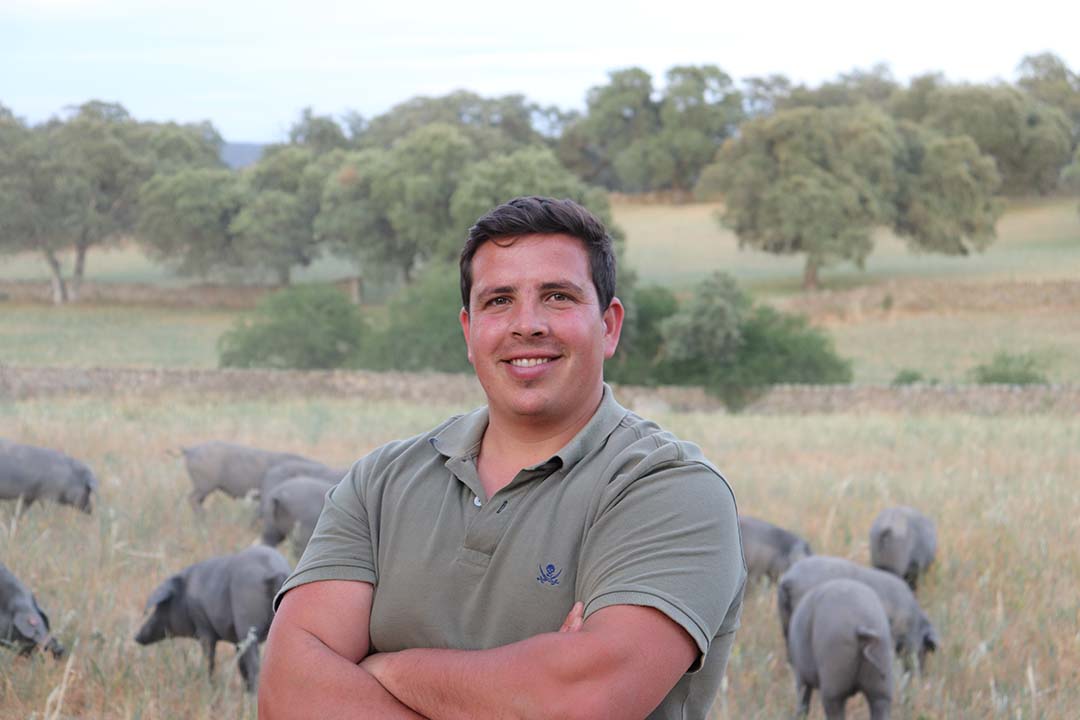
Cano has a small farm with Iberian pigs. A finca, as the Spanish call it. The typical white house and stables are located in a large yard that flows smoothly into the surrounding farmland. All in all, the young entrepreneur has 3 fincas. These are demarcated locations where the animals stay all or part of the year.
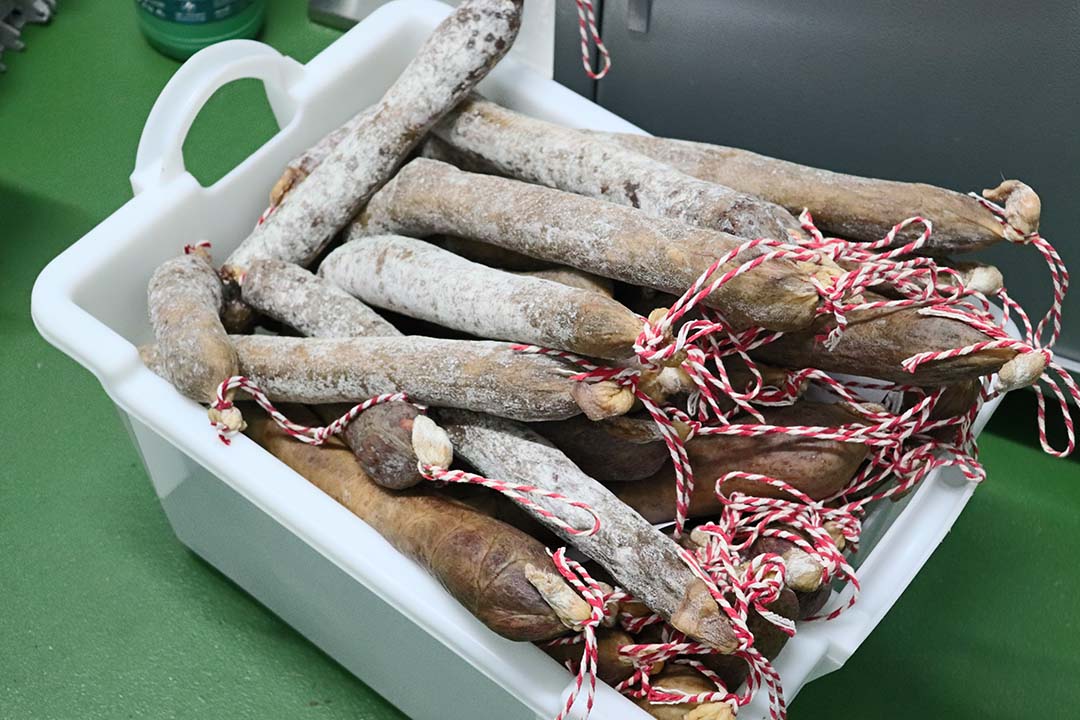
Younger producers of Iberian pigs
Cano belongs to a younger generation of Iberian pig producers. He started with 8 pigs in 2015, which his father donated to him. “I loved to continue the family tradition”. At the moment, Cano owns about 70 productive sows and their subsequent finisher pigs. By Iberian standards, this is a medium-sized farm.
Every year, he has about 300 finishing pigs slaughtered at 160 to 180 kilograms live weight. Those pigs are then between 14 and 18 months old. In the first few years he brought pigs ready for slaughter to the cooperative, he now takes care of processing and marketing himself.
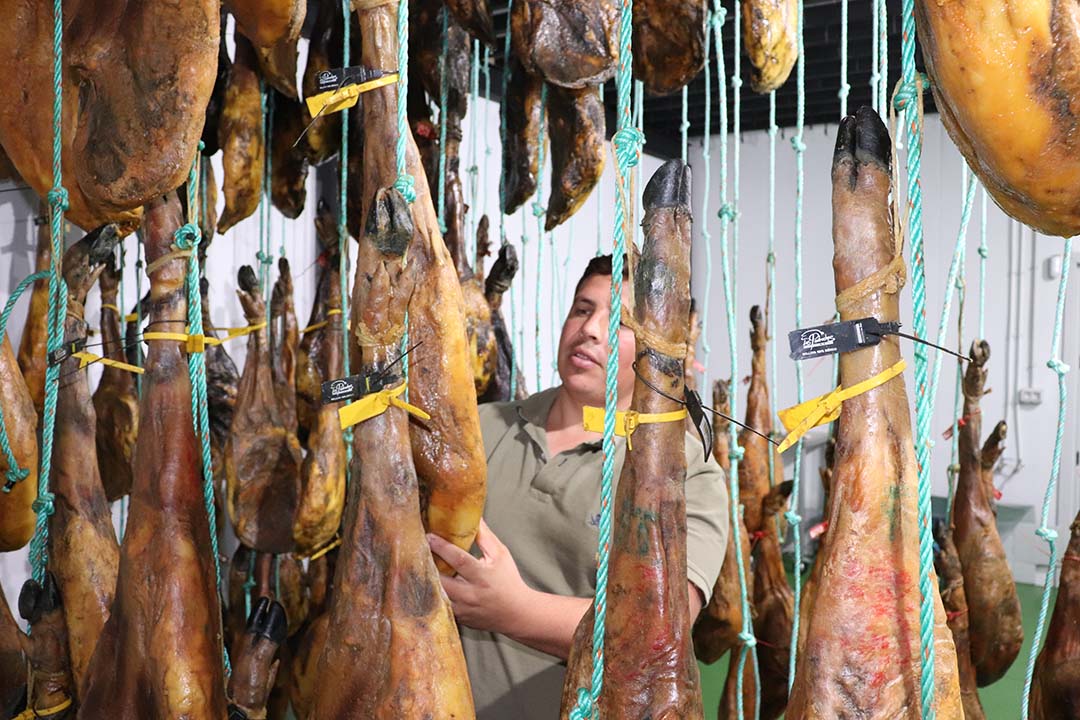
Outside in the woods
The system of production of Iberian pigs has 4 levels (see box), with Cano’s farm meeting the highest requirements. Among other things, this means 100% Iberian breed and the so-called montanera should be applied. That refers to a situation in which finishing pigs in their last phase of life, live a minimum of 60 days outdoors, in the forests, with one pig per hectare. Finishers are eligible to enter the forests when they weigh between 92 and 115 kg. They then feed on acorns and grass. Cano says, “At the end, they easily eat 10 kg of acorns a day.” The montanera phase runs roughly from November to early March.
One pig per hectare is not a fixed figure; every year the Spanish controlling authority sets the requirements, depending partly on the nutrient richness of the forests. Cano explains, “This year the standard was a little lower. That’s why I had to rent hundreds of hectares extra from other landowners.” As all farms are affected by the drought, there is great land pressure in the region.
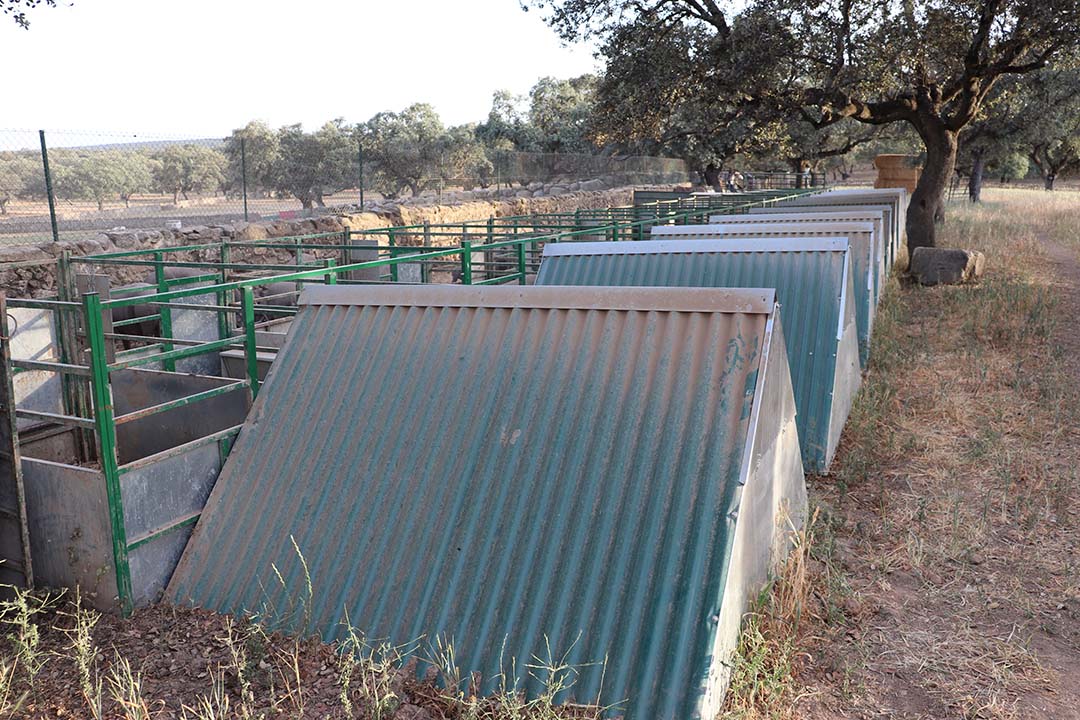
Supplementary feeding with grown grain
As a consequence of the montanera system, farms with Iberian pigs have a substantially different operating cycle than conventional pig farms. The montanera period is always key. Sows farrow simultaneously both in spring and in fall. In winter, gestation occurs rather late, so as not to have piglets too early. Gestating sows, piglets and finishing pigs stay in different fincas throughout the year. Cano supplements them with homegrown grain (especially triticale) and some purchased commodities such as corn and peas. Different feeding regimes can be applied to make sure that all finisher pigs are at the desired weight when the montanera phase starts. All montanera pigs are slaughtered between January and March 31 at the latest.

Curing and drying
Many producers of Iberian pigs belong to a cooperative. But Cano does it all by himself. After the pigs are slaughtered, he has the carcasses cut up into parts with – obviously – the most attention for hams production.
That process has two stages. The first stage of curing and drying takes a year and is done in a rented location in town. Further aging under conditioned conditions is done by Cano in a space that he owns. “It was my grandfather’s garage in the village, which I converted,” he says.

There the hams remain for at least 2 vyears before being cut and packaged. It is a beautiful sight to see rows of hams hanging at the ropes. Cano is visibly proud of his produce. His ambition is to take care of part of the process himself, as this is the phase during which a ham gets its typical flavour. The time of curing, the moisture content, the temperature and the type of mould in the room all play a role, requiring a substantial investment. And many other factors determine the meat’s final taste and quality, Cano says, such as the amount of acorns and grass ingested in the final finishing stage.
Cano also markets the products himself. He has contacts in key marketing countries, such as France and Germany. The better hams now yield about € 53/kg and weigh up to 8 to 8.5 kg. The slightly inferior shoulder ham of about 5.5 kg still yields about € 25/kg. Cano describes the taste of hams from Era Alta as “intense and sweet,” typical of the Córdoba region.
Some other parts such as loin pieces also represent value. The remainder he normally turns into authentic dried sausage.

Organic production
These prices are relatively high, when compared to conventional pig farming. Yet, the returns are a reason for concern. Because, despite the high prices that will have to be paid for the hams, the revenues are only just sufficient to make a living when all costs are deducted. Buffering up or saving for investments is barely an option. Producing organically is one road Cano is exploring. It is still a small but potentially interesting niche, which would make him the first participant within the control system for Iberian production (BOB). The farm now has about 25 sows for that purpose. In 2022, the first 30 pigs were slaughtered in an “organic” fashion; in 2023, that number had grown to 50.
In terms of housing, the pig farmer does not have to do anything extra; the pigs have more than enough space and always live outside. The difference from conventional production relates mostly to omitting artificial fertilisers and pesticides, and providing organic feed.

Driving further with water
Another possibility to increase his income is something related to tourism and recreation, like spending the night in the woods among the Iberian pigs. Little imagination is needed for this to be a unique experience in this environment. Cano comments, “It’s still an idea, but I want to explore it further.” Later this year, a first step will materialise in this process, with the start of tours as part of a touristic network.
Expanding production is certainly his ambition, as well. More stocks would allow him to continue to be an interesting supplier and allow him to tap into new markets. The biggest limitation, however, is available land: there is quite a bit of pressure on the available fincas, and especially in dry years like this year, he has to drive increasingly further afield, and that includes trucking water around. Cano fears that further growth means more remote land and more labour, which will increase fixed costs.
He stresses the importance of economics. But aspects such as continuing centuries-old practices and culture are certainly as important to him. He calls it a privilege to have his business in this unique area. He concludes, “It is the way of working and living, being able to preserve our family’s tradition.”



